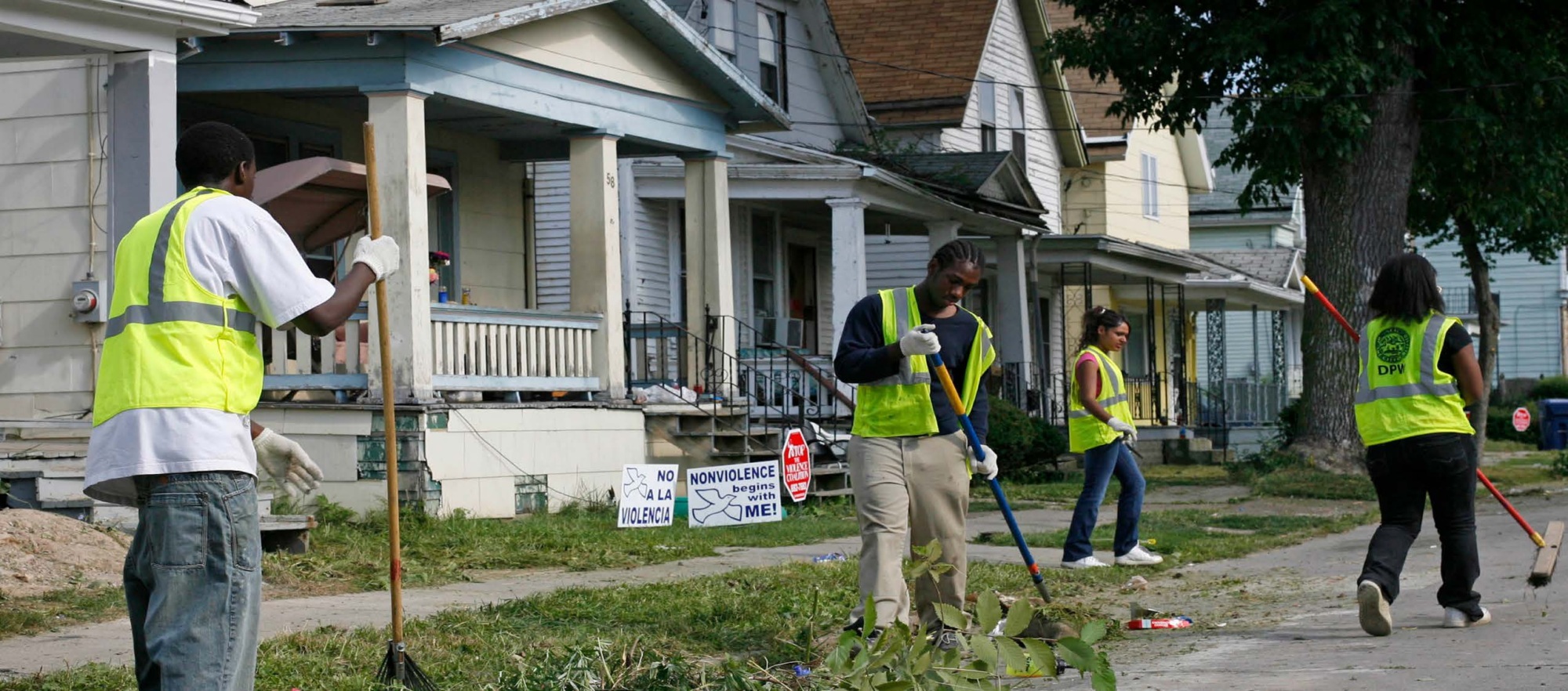“Tackling Persistent, Boundary-Spanning Problems Through Collaborative Innovation: Lessons From the Clean Sweep Initiative in Buffalo, NY”
Administration & Society
Action Insights
Last Updated
Topics
Collaboration, Innovation
Location
United States
What happens when city leaders collaborate with residents and partners in and out of city hall to solve complex problems? A study supported by the Bloomberg Harvard City Leadership Initiative finds answers in a long-running community cleanup program in Buffalo, N.Y.
Read the Action Insights below, or download as a PDF for use later.
Every city leader knows the adage that city hall must “break down silos” and collaborate more across agencies. The problem is those “silos” exist for a reason. Departmental specialization and division of labor can make the routine daily work of local government—jobs like filling potholes, picking up trash, or enforcing traffic laws—more efficient.
However, cities are complex places. And increasingly, the kinds of problems they’re facing, from homelessness to climate change to opioids, touch many departments, jurisdictions, and service providers at once. In this environment, collaborating across organizational boundaries is more important than ever—as is engaging residents to ensure that solutions have community buy-in and legitimacy.
But when is collaboration worth the effort? And how does it really work in practice? A study in the journal Administration & Society explores the benefits and tradeoffs that arise from practicing “collaborative innovation.” The findings can help city leaders understand and intentionally design collaborative innovation initiatives to unlock new ways of tackling tough problems.
For as much as mayors, scholars, and management consultants talk about breaking down silos, few empirical studies have examined how doing so actually works at the operational level. We set out to change that by looking at a long-running city-led collaboration in Buffalo, N.Y.: the Clean Sweep Initiative.
Clean Sweep began in the late 1990s with the goal of improving quality of life in Buffalo’s poorest neighborhoods. Every Wednesday morning from May through October, dozens of city staff from more than ten departments, along with community partners, flood into a two- or three-block area and close the streets to traffic. They go door-to-door talking with residents about what problems they’re facing and enhance the neighborhood through a range of city services such as tree trimming, brush cleanup, graffiti removal, boarding up vacant houses, and more. Cities across the U.S. and around the globe have replicated Buffalo’s model.
Clean Sweep exemplifies collaborative innovation in action: the effort brings organizations in and out of city hall together at scale—in close coordination with block clubs and community leaders—week after week. While Clean Sweep is targeted specifically at neighborhood development issues, its structure is relevant to other policy contexts, from economic development to housing to crime reduction.
We interviewed dozens of city staff, community partners, and residents involved in these operations, and held focus group discussions with residents whose blocks had received a Clean Sweep to find out what city leaders can learn from Buffalo.
We found three ways that collaborative innovation in the Buffalo program works in practice. Knowing what these are can help city leaders be intentional about how they structure their own collaborative efforts (see figure 1).
Figure 1: Social Outcome Generation Through Collaborative Innovation

Buffalo’s Clean Sweep is just one example of a city-led collaboration; initiatives in other cities aimed at other issues may look different. However, Clean Sweep does offer a glimpse at conditions under which collaboration is more likely to work. City leaders looking to build on Buffalo’s experience in their own collaborative efforts should keep the following in mind:
To be sure, none of this is easy. There were plenty of complaints from all sides. Collaborative innovation can be messy. Residents don’t always agree with each other on what their biggest priorities are. Distrust between agencies—or between residents and city hall—can get in the way of problem solving. The most common criticism we heard was that the intensive coordination involved in working collaboratively takes more time and effort.
But city staff, partners, and residents also found that the tradeoffs are worth it. “If you do it right, it’s slower because you’re engaging with the community. You’re finding out what they need. You’re trying to craft an appropriate response,” the city’s former chief building inspector told us. “But it’s much more effective. Whenever you have a group of people meeting, it can be sloppy, occasionally a little unruly. But the product is so much better.”
Administration & Society
Stanford Social Innovation Review
Stanford Social Innovation Review
Bloomberg Harvard City Leadership Initiative
More Resources Like This
